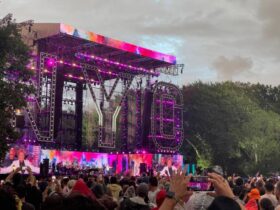In cities around the world, navigating public transportation can feel overwhelming—switching buses or trains, handling delays, or figuring out accessible paths. Tubeseferi is emerging as a smart solution for urban transit needs. Whether you are commuting daily or traveling to a new destination, Tubeseferi helps you plan, adjust, and ride with greater peace of mind.
This article takes an in-depth look at Tubeseferi: what exactly it offers, how it works, its core perks, comparisons with rivals, tips for best use, and where Tubeseferi is heading next.
What Is Tubeseferi?
Tubeseferi is a transit navigation platform designed specifically for public transportation systems. Rather than trying to cover every mode (driving, cycling, walking), Tubeseferi focuses on buses, subways, trams, and sometimes ferries or light rail in major cities. It integrates real-time data from transit agencies, maps, schedules, and user-friendly tools to make transit more predictable and less stressful.
Key components of Tubeseferi:
-
Route planning that stitches together multiple transit modes
-
Live updates about delays, service changes, closures
-
Offline maps and saved routes for areas with weak or no internet
-
Support for accessibility (step-free paths, elevator info, etc.)
-
Fare views and cost comparisons
How Tubeseferi Works in 2025
Tubeseferi’s operation has matured as transit data systems have grown more open. These are the core mechanisms by which Tubeseferi delivers value:
Real-Time Transit Data Integration
Tubeseferi connects via APIs to transit authorities in supported cities. This includes schedule feeds, live delays, station status, and sometimes crowding information. The app constantly refreshes to reflect disruptions—so the route you planned this morning might auto-adjust if something breaks down.
Smart Routing & Alternative Suggestions
You input your starting point and destination; Tubeseferi calculates several possible routes. Its algorithm considers:
-
Total travel time (in-vehicle + waiting + walking)
-
Number of transfers and walking required
-
Accessibility constraints (stairs, ramps, etc.)
-
Fare cost, when possible
-
Predicted reliability or likelihood of delays
If the fastest route is prone to disruption, Tubeseferi might suggest a slightly longer but more reliable option.
Offline and Cached Features
Knowing transit sometimes goes underground or into zones with no connection, Tubeseferi allows users to download maps for offline use. Saved favorite routes or sections of transit networks can also be cached, so you can still see directions even if your mobile data drops.
Personalization & Local Context
Over time, the app learns what you prefer: maybe minimal walking, or always taking wheelchair-friendly paths. It also factors in local transit quirks: crowd patterns, frequent delays on certain lines, or station closures. Some city deployments include multi-language interfaces and local cultural norms built in (e.g. major landmarks, exit names inside stations).
Alerts, Notifications & User Feedback
Users receive notifications when a planned route has a delay, when a preferred station is closed, or when there is a service diversion. Feedback tools allow users to report inaccuracies (wrong times, missing station info), which transit authorities or app maintainers often use to improve data quality.
Key Features That Make Tubeseferi Stand Out
Here are what many users say are the standout features of Tubeseferi in recent usage:
-
Accessibility Filters
Tubeseferi often includes filters so you can choose paths that avoid stairs, use elevators, or limit walking. This is valuable for people with mobility issues, for stroller users, or for travelers with heavy luggage. -
Cost Transparency
It often shows fare information or route cost comparisons, letting you choose a cheaper route even if it takes slightly longer. -
Offline Functionality
Downloading maps or parts of transit networks ahead of time ensures continued usefulness, especially in underground or low-signal areas. -
Multi-Modal Transit Coverage
Many transit-navigation apps omit some modes; Tubeseferi tends to include multiple ones (buses, metro, trams) where available, giving more realistic route options. -
User-Centric Alerts
Push notifications that warn you ahead about delays or changes before you depart or mid-route make a big difference in avoiding unpleasant surprises. -
Local Adaptation and Friendly UI
Clean layout, station maps, guidance inside large transit hubs (which exit to take, what platform), approximate walking times, etc., are well thought through.
Benefits of Using Tubeseferi
For different kinds of users, Tubeseferi offers distinct advantages:
-
Everyday commuters save time and avoid wasted waits, know when their usual route is disrupted.
-
Tourists and visitors gain clarity about how to navigate new transit systems—how to transfer, which entrances/exits matter, etc.
-
People with mobility needs can find paths that avoid barriers.
-
Budget-conscious travelers get insight into cheaper routes or combination tickets.
-
Smart-city planners or transit agencies can use aggregated data (with privacy safeguards) to optimize schedules, identify congestion or frequent delays.
How Tubeseferi Compares to Alternatives
When stacked against other transit or navigation apps, here’s how Tubeseferi often compares:
| Feature | Tubeseferi | General Navigation Apps (e.g. Google Maps) | Other Transit Apps |
|---|---|---|---|
| Transit-only specialization | ✅ Deep transit focus, strong coverage | ⚠ Less detailed transit features; mixed reliability | Varies greatly by city |
| Real-time disruption communication | ✅ Frequent updates; built-in alerts | ✅ Some; often delays are less visible | Good in some cities; missing in others |
| Offline transit maps and functionality | ✅ Strong support | ⚠ Partial support; may lose features offline | Often limited or unavailable |
| Accessibility support | ✅ Explicit filters | ⚠ Sometimes only minimal | Some apps good, many lack full options |
| Cost / fare transparency | ✅ Built in | ⚠ Basic; often doesn’t compare costs | Some do; most do not |
| Multi-modal coverage (bus, tram, metro, ferry) | ✅ Broad in supported cities | ✅ Often; but may miss minor modes | Highly variable |
Tips for Getting the Most from Tubeseferi
To make Tubeseferi work best for you, here are practical tips:
-
Always update the app — transit systems change schedules and stations; updates help keep data fresh.
-
Download maps for your typical routes and offline backups.
-
Turn on notifications so you get alerts about changes affecting your commute.
-
Set your preferences early (e.g. minimal walking, avoid staircases) so suggestions align with your personal needs.
-
Check alternate routes before departure; sometimes a slightly longer but more reliable path saves stress.
-
Pay attention to station exit and entrance info; in big transit hubs, choosing the right exit can cut your walking time inside.
-
Report errors you spot — incorrect times, missing elevator info, broken station access — this helps improve the system for all users.
Challenges & Limitations
While Tubeseferi offers many benefits, there are some realistic limitations to keep in mind:
-
Coverage gaps: In many smaller cities or less-mapped regions, transit agency data is unavailable or inconsistent. Tubeseferi may have limited or approximate info there.
-
Data accuracy issues: Even with connections to transit systems, sometimes delays or closures are not updated in time.
-
Connectivity dependence: For real-time changes and alerts, you need good internet; offline features help, but can’t replace everything.
-
Cost / subscription limitations: Some features may be premium in certain deployments; not all functionality is always free.
-
Learning curve: For first-time users, large transit hubs or multi-line transfers may still be confusing despite the help; familiarity improves experience.
What’s New with Tubeseferi in 2025
Tubeseferi continues evolving. Here are recent or emerging trends in 2025:
-
Crowd level / comfort metrics: in some cities, Tubeseferi now shows how crowded a train or bus tends to be, helping users choose less congested options.
-
Improved accessibility data: more transit agencies are publishing elevator/escalator status, step-free access, etc., which Tubeseferi is incorporating.
-
Better offline map experiences: smaller storage footprints, incremental updates so you don’t need to redownload whole maps whenever minor changes occur.
-
Localized support: more cities get full support, including local language translations, better station signage data, more transit modes.
-
Integrated fare/ticket options: in some places, you may be able to buy or validate tickets through Tubeseferi, or at least have better visibility on ticketing.
-
Sustainability features: suggestions to use greener or lower-emissions transit where possible; encouragement of public transit over private vehicle use.
The Future of Tubeseferi: Where It May Go Next
Looking ahead, Tubeseferi’s trajectory could include:
-
Wider global adoption: expansion into more cities, transit systems, especially in regions where transit data is just becoming digitized.
-
AI & predictive analytics enhancements: anticipating delays before they happen, suggesting routes based on historical data, weather, crowding, etc.
-
Seamless multi-modal door-to-door routing: combining walking, public transit, bike-share, scooters, ride-share, etc., into one plan with minimal friction.
-
Ticketing and payment integration: enabling fare purchase, digital tickets, passes directly in the app.
-
Augmented reality (AR) navigation inside stations: guiding users visually through large station halls, showing exits, platforms, signs through AR overlays.
-
Increased personalization and community feedback loops: letting users share tips/hacks (which exit is faster, which platform has less crowding), which feed into suggestions for other users.
Conclusion
Tubeseferi offers a compelling package for anyone who uses public transit—daily commuters, tourists, people with mobility requirements—all benefit from its focused transit-oriented design, real-time alerts, offline support, and cost visibility. While no app is perfect, Tubeseferi’s continuous improvements and growing features in 2025 make it among the front-runners in transit navigation tools.
If you depend on public transport, or are traveling to a new city, using Tubeseferi can turn what might be a stressful journey into something smooth, efficient, and more predictable. It’s aligning technology with the needs of modern urban mobility.
Frequently Asked Questions (FAQ) about Tubeseferi
Q: Does Tubeseferi work in smaller towns / rural areas?
A: It depends on whether local transit data is available. In many smaller towns, transit schedules or live feeds are less well maintained, so Tubeseferi’s usefulness can be limited. However, downloaded map and cached schedule features still help.
Q: Is Tubeseferi free?
A: Basic route planning, alerts, offline maps are usually free. Some advanced or premium features (ticketing, high resolution offline maps, crowd metrics) may require subscription or in-app purchase depending on location.
Q: How accurate is Tubeseferi’s real-time information?
A: Generally quite good in cities where transit agencies provide live data. But there can be delays in data, or outages. Users should allow some buffer time.
Q: Can Tubeseferi help people with disabilities?
A: Yes: features like step-free routes, elevator/escalator info, shorter walking transfers, etc., support accessibility. Availability depends on data from the transit system.
Q: How often should I update Tubeseferi?
A: As often as possible—transit schedules, station maintenance, system changes happen frequently. Updates ensure you have correct, current information.








Leave a Reply